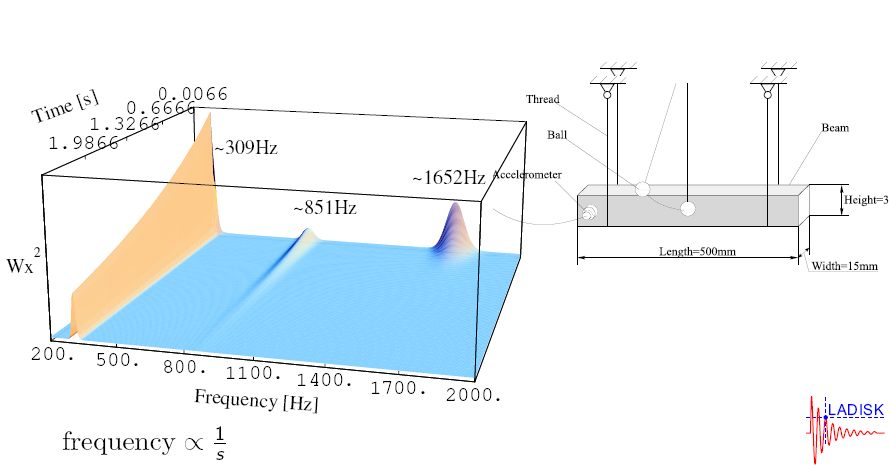A continuous wavelet transform (CWT) based on the Gabor wavelet function is used to identify the damping of a multi-degree-of-freedom system. The common procedures are already known, especially the identification with a Morlet CWT. This study gives special attention to the following: a description of the instantaneous noise, the edge-effect of the CWT, the frequency-shift of the CWT, the bandwidth of the wavelet function and the selection of the parameter ? of the Gabor wavelet function of the CWT. The procedures are demonstrated using several numerical examples and on signals acquired from the lateral vibration of a uniform beam. The study demonstrates the advantages of using the amplitude and phase methods, both of which provide information about the instantaneous noise. The procedures presented are appropriate for automating the identification process.
~
See also related papers:
[Damping identification with the Morlet-wave]
[Enhancements to the continuous wavelet transform for damping identifications on short signals] download pdf
http://dx.doi.org/10.1016/S0022-460X(02)01032-5
download pdf
http://dx.doi.org/10.1016/S0022-460X(02)01032-5




